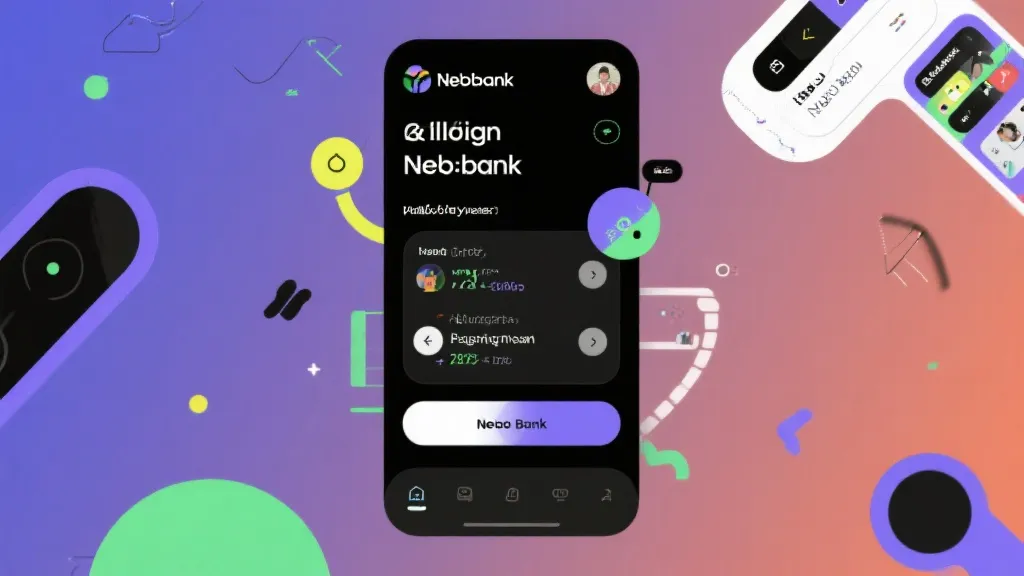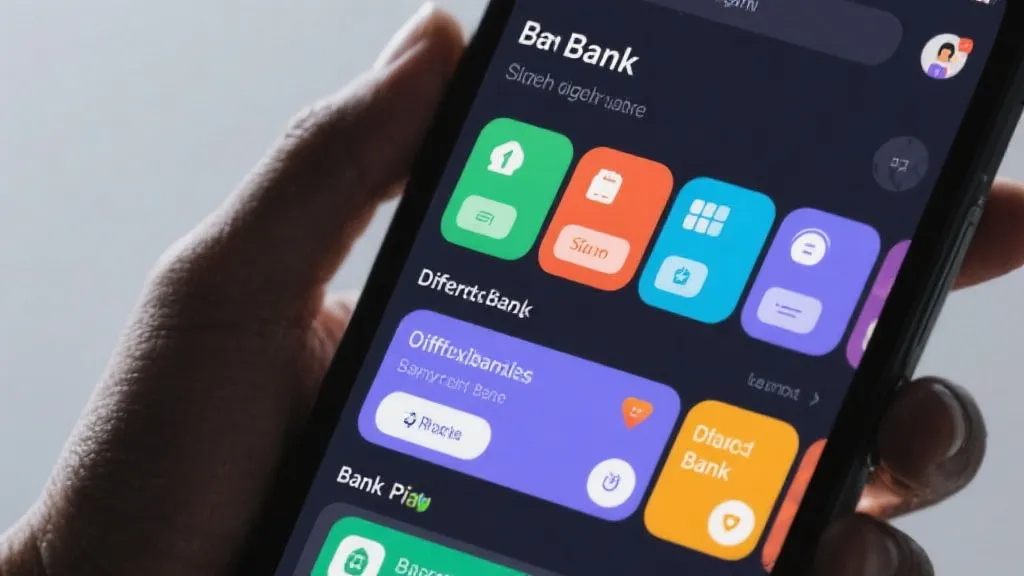This guide explores the competitive landscape surrounding Webbank, a prominent player in the internet-based financial sector. Providing insights into the major competitors, it examines the strategies these firms employ and analyzes how they position themselves in a highly competitive market. The discussion further expounds on the dynamic nature of online banking and the critical aspects influencing competitive advantage.

The evolution of internet-based banking has driven significant transformations in the financial services industry. At the forefront of this change is Webbank, a digital financial institution that has leveraged technology to provide seamless online banking solutions. As customers increasingly gravitate towards digital channels for their financial needs, Webbank's model exemplifies the future of banking. However, the competitive landscape is thick with contenders striving to capture market share, making the need to understand Webbank competitors crucial for stakeholders and analysts alike.
The rise of web-based banking services has not merely changed how transactions occur; it has redefined the customer experience. Traditional banking structures, often laden with bureaucracy and slow, cumbersome processes, have given way to agile platforms designed to prioritize user-friendliness and accessibility. In this framework, Webbank serves as a noteworthy case study, illustrating the potential advantages of digital banking while simultaneously navigating a crowded market. Understanding how Webbank differentiates itself requires a deep dive into its features, the compelling value propositions it presents to consumers, and, importantly, the competitive forces it faces.
In the realm of internet banking, Webbank faces stiff competition from several notable entities. Traditional banks, fintech startups, and other internet-only banks are exploiting technology to court digitally savvy customers. Analyzing these competitors provides insight into the strategies necessary to thrive in this digital-centric market. The backdrop of a shifting financial landscape, driven by technological innovation and changing consumer preferences, highlights the urgency for institutions like Webbank to not only keep pace but to anticipate shifts within the market.
Central to understanding this landscape is recognizing the diverse strategies employed by competitors. Many of these players show a commitment to leveraging technology not just for efficiency but for creating a more personalized and enriching consumer experience. Webbank must navigate this environment while also grappling with its own unique set of challenges, including establishing brand loyalty and trust in an industry where reputation is paramount.
To navigate the competitive environment, it is essential to understand each competitor’s strengths and weaknesses. Ally Bank, for instance, has successfully capitalized on customer satisfaction through offering high-yield savings products and comprehensive online support. This commitment has cultivated loyalty, making Ally a first choice for those seeking out digital banking services. Their investment in technology, particularly in mobile applications and customer service interfaces, demonstrates an understanding of the needs and desires of their tech-savvy clientele.
Conversely, Chime’s appeal lies in its innovative fee structures and personalized spending solutions, attracting consumers fed up with traditional banking practices. They have positioned themselves as a champion of consumer rights, promoting financial wellness through features that help users save effortlessly. However, Chime does face challenges relating to a limited service portfolio, which could hinder its ability to compete with more established banks offering comprehensive financial services. Expanding its portfolio could enhance customer retention and address the needs of a more diverse client base.
Marcus by Goldman Sachs benefits from a strong brand reputation, a significant advantage when building trust among new clients. Their financial products are underscored by the wealth of experience the Goldman Sachs name conveys, lending an air of authority to their offerings. However, a critical weakness remains in their service menu; the absence of personal checking accounts limits their appeal to consumers seeking a full-service banking solution. This represents a significant opportunity for Marcus to expand and engage more deeply with customers.
SoFi operates through a multifaceted business model that seeks to cater to a specific demographic of young professionals eager to integrate banking solutions with investing and personal finance management. Their commitment to education, through blogs, webinars, and financial planning tools, establishes a sense of community and loyalty among users. Still, their complex fee structures may deter potential customers looking for straightforward banking options. Simplifying these fees could facilitate broader market penetration and appeal.
The digital banking sector offers an array of opportunities, driven largely by advancements in technology and a significant shift in consumer banking behavior. Mobile applications, intuitive platforms, and personalized features are becoming baseline expectations for consumers. In this evolving landscape, Webbank has the opportunity to differentiate itself through enhanced service offerings, such as robust financial planning tools and comprehensive user feedback systems.
As the demand for personalization grows, harnessing data analytics will allow Webbank to tailor its services more closely to individual customer needs, thereby creating a distinct competitive edge. Achieving this not only requires investment in technology but also a culture that embraces innovation and creative problem-solving. However, this shift also presents challenges in terms of cybersecurity, customer retention, and regulatory compliance. Being able to strike a balance between innovation and security is key to maintaining competitive advantage.
Cybersecurity remains a paramount concern for all players in the financial services sector. As cyberattacks become more sophisticated, ensuring the safety of customer data is a critical challenge. This is particularly true for digital banks like Webbank that operate entirely online, where the ramifications of a breach can be devastating. To mitigate these risks, Webbank must remain vigilant and invest in state-of-the-art cybersecurity measures, which may necessitate partnering with security firms specializing in the financial sector.
Moreover, customer retention becomes increasingly important in a digitized world, where switching costs for customers are lowered, and consumers can access myriad alternatives with ease. Building customer loyalty in this context will involve cultivating strong relationships through exceptional customer service and leveraging technology to offer personalized financial solutions. Fostering community engagement and trust will also be pivotal to countering the transient nature of consumer preferences in the online banking space.
Finally, navigating the intricate web of regulatory compliance is a challenge that all financial institutions must face. Digital banks often operate in a rapidly changing regulatory environment that requires agile adaptation to new laws and guidelines. Ensuring compliance not only protects Webbank from legal ramifications but also enhances consumer confidence. By staying ahead of regulatory changes and proactively communicating these adaptations to consumers, Webbank can bolster its reputation as a trustworthy institution.
| Competitor | Strength | Weakness |
|---|---|---|
| Ally Bank | High customer satisfaction, competitive interest rates, strong online presence | Limited physical presence, potential drawbacks regarding personal interaction |
| Chime | No traditional fees, innovative savings tools, strong brand advocacy | Narrow service portfolio, reliance on integrated banking partners |
| Marcus by Goldman Sachs | Strong brand backing, expertise in financial services, competitive APY offerings | Lack of personal checking accounts, limited product variety compared to rivals |
| SoFi | Comprehensive financial services tailored to professionals, focus on education | Complex fee structures, risk of information overload for users |
In conclusion, Webbank operates within a dynamic and rapidly evolving competitive landscape. By analyzing key competitors such as Ally Bank, Chime, Marcus by Goldman Sachs, and SoFi, Webbank can identify potential areas for strategic development and continued innovation. It's incumbent upon Webbank to monitor emerging trends within both the technology and regulatory sectors closely. Embracing digital transformation while ensuring robust security and adapting to regulatory changes will be essential strategies to maintain and enhance its market position.
As digital banking continues to gain traction among consumers, Webbank must remain agile, responsive, and forward-thinking. The integration of cutting-edge technologies, alongside a commitment to exceptional customer experiences, will enable Webbank not only to compete but to lead in this transformative era of banking. By fostering a customer-centric culture that emphasizes transparency and trust, Webbank can effectively navigate the complexities of the financial landscape, positioning itself for sustained growth and success in the future.
Understanding Sme Neobank Impact

Exploring Webbank and Its Competitors

Discover Westminster Plaza Orlando

Discover Heartis Eagle Mountain Elegance

Westminster Plaza Orlando: A Comprehensive Guide

Transforming Banking with Sme Neobank

Discovering Westminster Plaza Orlando

Discovering Westminster Plaza Orlando

Life Insurance for Seniors: Maximizing Coverage and Benefits
